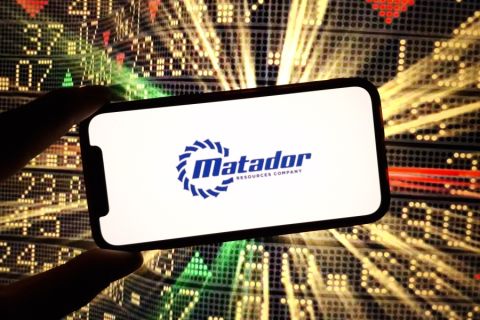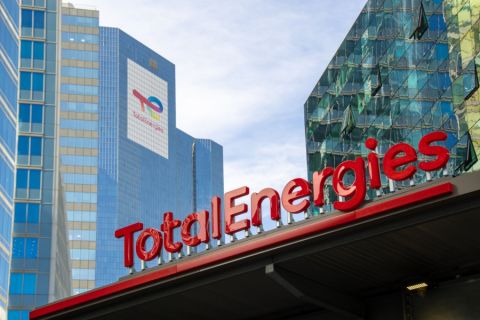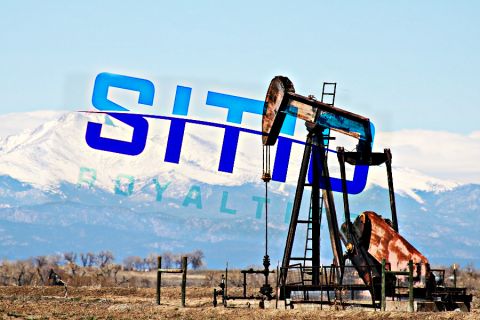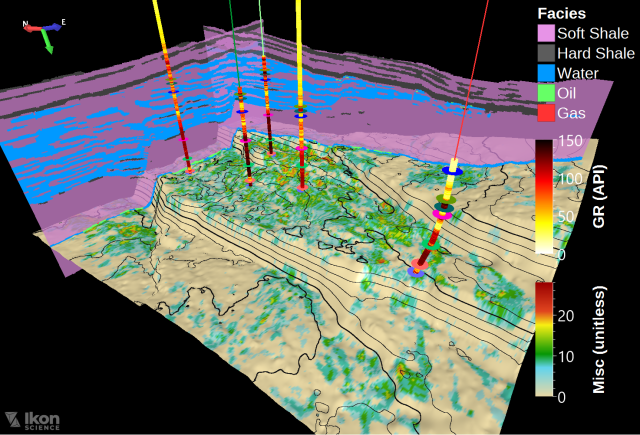
Ikon Science’s facies-based seismic inversion offers vertical and stratigraphic constraints, as well as anisotropy. (Source: Ikon Science)
Machine learning techniques are improving calculations in seismic inversion — a method of identifying changes in rock properties between wells — to give oil and gas companies ranging from the Permian Basin to offshore Vietnam a better understanding of the subsurface environment..
Seismic data must go through cleanup, processing and interpretation before it is useful, however. But using the best relevant rock physics, geomechanics and pore pressure models available can unlock a more precise understanding of subsurface geology.

—Andrew Snowling, a senior geoscientist at Ikon Science. (Source: Ikon Science)
One seismic reservoir characterization technology applies facies-based inversions that can be used by both exploration and production teams to improve their understanding of the subsurface geology, and it’s been used both onshore and offshore, according to Andrew Snowling, a senior geoscientist at Ikon Science. Facies establish different units of rock from adjacent units within a contiguous body of rock by physical, chemical or biological means, according to the Society of Exploration Geophysicists Wiki.
Ikon’s RokDoc Joint Impedance & Facies Inversion (Ji-Fi) seismic inversion solution uses individual rock physics models linked to specific rock types. The models allow the inversion to know, for example, whether the characteristics describe a sandstone, shale, limestone, or salt and to choose relevant low-frequency characteristics when certain seismic reflections are observed in the data.
Ji-Fi uses the measured well information in a field to constrain the seismic inversion result to realistic geological expectations, which provides a better understanding and prediction of reservoir characteristics such porosity, pore pressure and stress.
In the Gulf of Mexico, an operator “had basically given up on trying to invert the data because of the salts,” he said.
Salt layers affect seismic and inhibit seismic conversion. Ji-Fi was applied about six months ago to the operator’s subsalt seismic data to identify different facies and geologies for the reservoir in about 2,000 ft of water depth. Ikon’s use of Ji-Fi provided results that exceeded the client’s expectations, Snowling said.
“We were able to identify reservoirs and the sand sequences really clearly, which is going to be able to help them with their future development on the field,” he said.
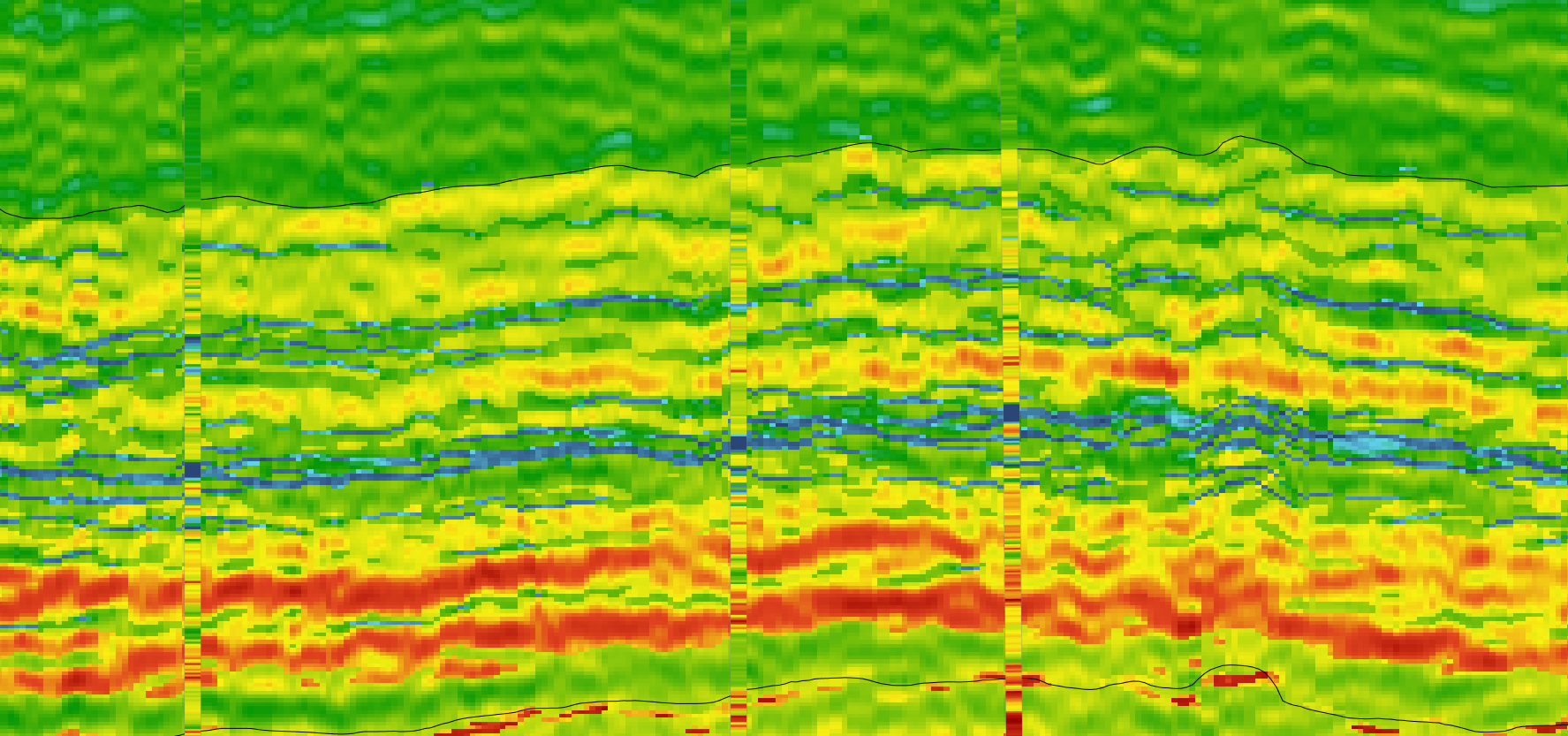
From offshore to shales
In the Nam Con Son Basin offshore Vietnam, Ikon successfully applied Ji-Fi to help an operator understand porosity in carbonate reservoirs.
Carbonates are “much stiffer rock,” which makes it harder to detect the difference between oil and water, he said.
“In Vietnam, they have a lot of carbonate reservoirs, which are really difficult from a rock physics point of view. And that is because, when you put a seismic wave through a carbonate or when you are drawing a carbonate, an understanding of the porosity and its connectivity can be quite difficult,” he said.
Ikon’s software incorporates the work of noted geophysicist Lev Vernick, which allows Ikon to relate inversion results from Ji-Fi to petrophysical and geomechanical qualities.
“What's kind of cool is if we can link a Ji-Fi result to geomechanics, we get an understanding of stress,” and wellbore difficulties might be encountered, Snowling said. “That's really the direction we are trying to go with in West Texas and everywhere where there is fracking and unconventional shales.”
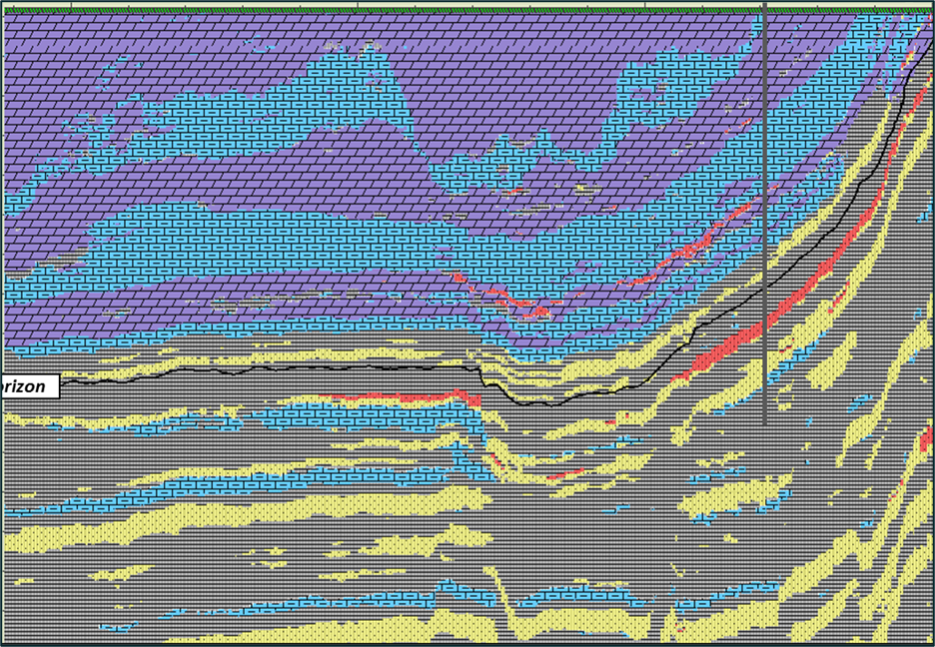
Ikon has been using Ji-Fi in the Permian Basin to help clients determine where different rock properties are in their shale reservoirs.
“Our clients are looking for lots of different shales,” he said. “You've got the high organic shales, you've got overburdened shales. And the issue there is all of these shales have very similar elastic contrasts, so they're very difficult to detect the differences between them.”
What’s been helpful, Snowling said, is applying a rock physics model that can detect a certain reflectivity, which enables Ji-Fi to predict “where one formation or rock type is versus another.”
Uses beyond oil and gas
Ji-Fi also helps operators monitor the migration of carbon dioxide within reservoirs.
“A sandstone with a water or a brine saturation is going to look very differently [compared]to one with CO2,” he said.
“We've run Ji-Fi on multiple sets of seismic to track the migration of carbon dioxide within the reservoir to get a good understanding of how the carbon storage is impacting the rock,” he said.

While Ji-Fi has been around for nearly a decade, Ikon is beginning to incorporate machine learning into its tools, including Ji-Fi and deep quantitative interpretation (QI).
“Something we’ve been recently working on is Deep QI, which is our machine learning toolkit,” he said.
The QI package links rock physics to geomechanics and pore pressure, and seismic inversions done in Ji-Fi are able to be informed by those three fields of expertise. It is a toolbox of different machine-learning algorithms that allows geoscientists to predict different well properties.
“They may say, ‘I haven't got porosity in this well, but I have porosity in all these other wells. Let's use those other wells with the machine-learning algorithm to predict it in this,’” Snowling said.
The outputs from inversion can be related to a machine learning algorithm making it possible to predict a 3D volume of porosity and provide an understanding of different well attributes away from those wells beyond just a simple inversion that links to industry-published rock physics models, he added.
This better understanding can help them more successfully plan future wells and more optimally develop their fields, Snowling said.
“We’ve begun to roll Ji-Fi out to a series of large processing clusters at our clients, which have significantly decreased calculation times and made it quicker and easier for them to get results,” Snowling said.
Recommended Reading
Deep Well Services, CNX Launch JV AutoSep Technologies
2024-04-25 - AutoSep Technologies, a joint venture between Deep Well Services and CNX Resources, will provide automated conventional flowback operations to the oil and gas industry.
EQT Sees Clear Path to $5B in Potential Divestments
2024-04-24 - EQT Corp. executives said that an April deal with Equinor has been a catalyst for talks with potential buyers as the company looks to shed debt for its Equitrans Midstream acquisition.
Matador Hoards Dry Powder for Potential M&A, Adds Delaware Acreage
2024-04-24 - Delaware-focused E&P Matador Resources is growing oil production, expanding midstream capacity, keeping debt low and hunting for M&A opportunities.
TotalEnergies, Vanguard Renewables Form RNG JV in US
2024-04-24 - Total Energies and Vanguard Renewable’s equally owned joint venture initially aims to advance 10 RNG projects into construction during the next 12 months.
Sitio Royalties Dives Deeper in D-J with $150MM Acquisition
2024-02-29 - Sitio Royalties is deepening its roots in the D-J Basin with a $150 million acquisition—citing regulatory certainty over future development activity in Colorado.




